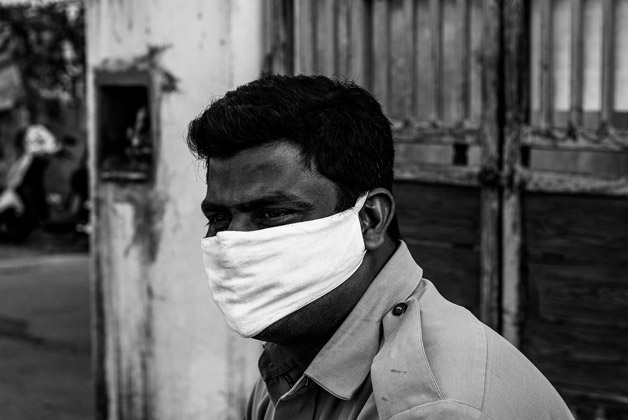
.jpg)
The headlines in 2020 were all focused on the pandemic, day after day. A war with China, reports of territory surrendered to the intruders, a gang lord encountered, some of our greatest artists died…but all our attention remained on the dreaded virus. The healthcare apparatus was examined from various angles and moneys started pouring in to help the public health system fight the battle against infection. However, amidst all this, the number of patients who got ignored, the illnesses that were not treated and the plight of the regular pregnant mothers who couldn’t see their doctors remained unaddressed.
Much before the coronavirus pandemic began, India’s healthcare system was reeling under the triple burden of disease – control of infectious diseases, growing incidence of non-communicable diseases, as well as a rising wave of drug-resistant pathogens. India is now the third most-affected country due to the coronavirus outbreak globally, accounting for 8 lakh recorded cases and about 22,000 related deaths. Though India hurriedly enforced a harsh lockdown early on with severe human and economic costs, the government failed to utilise this time to improve the country’s health infrastructure or prepare for the impending surge in cases.
As hospital beds and staff were diverted to aid Covid-19 efforts, healthcare facilities closed down outpatient services and curtailed elective surgeries amidst fears of the disease spreading among health workers. In the absence of an official registry for NCDs, data on how the pandemic has affected such patients is largely unavailable. However, widespread reports of renal, cancer and cardiovascular patients being refused treatment and routine check-ups in the absence of covid-negative results have emerged. Shortages of medicines and diagnostics contributed to disruptions in healthcare for non-coronavirus patients. Those suffering from malaria, HIV, rheumatoid arthritis and lupus faced shortages of anti-retrovirals, hydroxychloroquine and Tocilizumab with the drugs’ increased use for coronavirus treatment.
The perceived risk of visiting a healthcare facility during the pandemic, as well as restrictions on movement during the lockdown caused an effective decline in preventive screening as well as routine management of diseases. With public health screenings and immunisation drives being postponed to avoid large gatherings, the fight against NCDs and vaccine-preventable diseases such as polio, measles, diphtheria, whooping cough and mumps was affected. Interventions targeted at controlling vector-borne diseases like chikungunya, malaria and dengue have also been delayed. Maternal and family planning healthcare services took a hit, substantially increasing the risk of unwanted pregnancies, and maternal and infant deaths. The pandemic may take away two decades of India’s gains in maternal mortality rates.
Despite having the largest global burden of tuberculosis and more than TB 1,400 deaths a day, notifications for incidence of the disease across India dropped by over 50 percent since March, with an estimated 3,00,000 missed cases recorded until May 30. Fears over the rise of multidrug-resistant tuberculosis have been raised as restricted mobility and mass exodus of migrants interrupted the treatment regimen of several patients. Mobilisation of ventilators and beds for Covid-19 patients has affected critical TB patients as well.
The Integrated Disease Surveillance Programme(IDSP), India’s central disease monitoring network operating under the National Centre for Disease Control, has seen a steep decline in the number of reported outbreaks, as compared to previous years. While officials attributed this to behavioural changes such as handwashing and physical distancing that have helped prevent the spread of communicable diseases, the possibility of underreporting as a reason for the sudden dip cannot be overruled. Curiously, IDSP’s weekly updates for the period since the twelfth week of 2020 have not been uploaded on the official website.
Even as telemedicine and online consultations can help reduce the burden on healthcare workers, a steady supply of PPE gear and testing kits must be ensured for their safety. Making pre-surgery Covid tests mandatory will also go a long way in ensuring the safety of patients and healthcare workers. More beds and ventilators must be made available for non-coronavirus patients. As the season for vector-borne disease outbreaks looms, public awareness regarding simple and effective ways of disease prevention like use of mosquito repellents and nets needs to be generated. The IDSP must continue to publish weekly updates to help keep a check on future disease outbreaks.
Immunisation, public health screening, family planning and other RMNCH programmes should be resumed fully with social distancing and other safety protocol in place. Additionally, national healthcare services provided to tuberculosis and HIV patients must continue without disruptions. Measures like dual testing for Covid and TB will also help during these times. Missed cases of TB must be tracked down at the earliest and treated to prevent further transmission of the disease.
To put things in perspective, the 2014-16 Ebola virus epidemic that ravaged West Africa had caused a 50 percent reduction in access to healthcare at the time. This resulted in an additional 10,000 people dying of TB, Malaria and HIV during the epidemic. While it goes without saying that efforts must be stepped up to contain the coronavirus outbreak in the country, it would be deplorable to do so at the expense of India’s non-Covid patients.
The article was published on 12.7.2020 in Siasat: https://www.siasat.com/step-up-efforts-to-control-covid-cases-but-dont-lose-sight-of-other-deadly-diseases-1922532/
